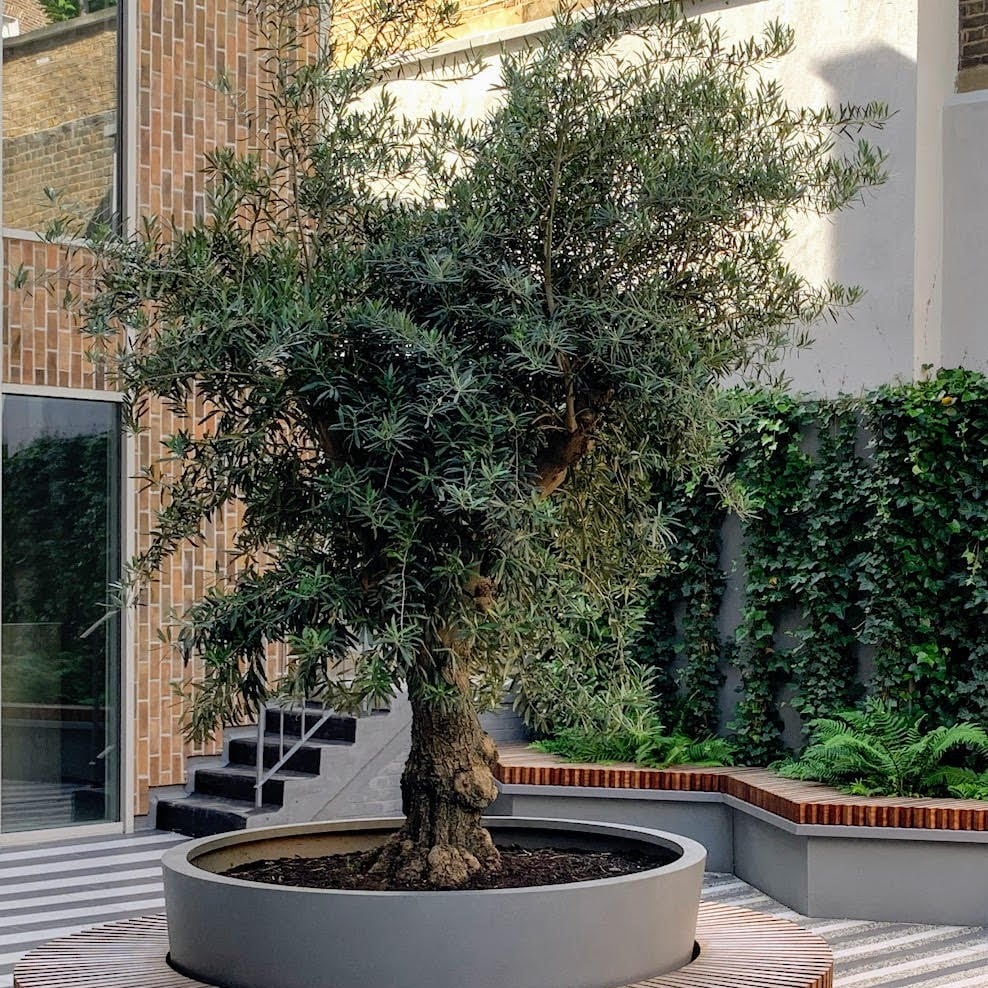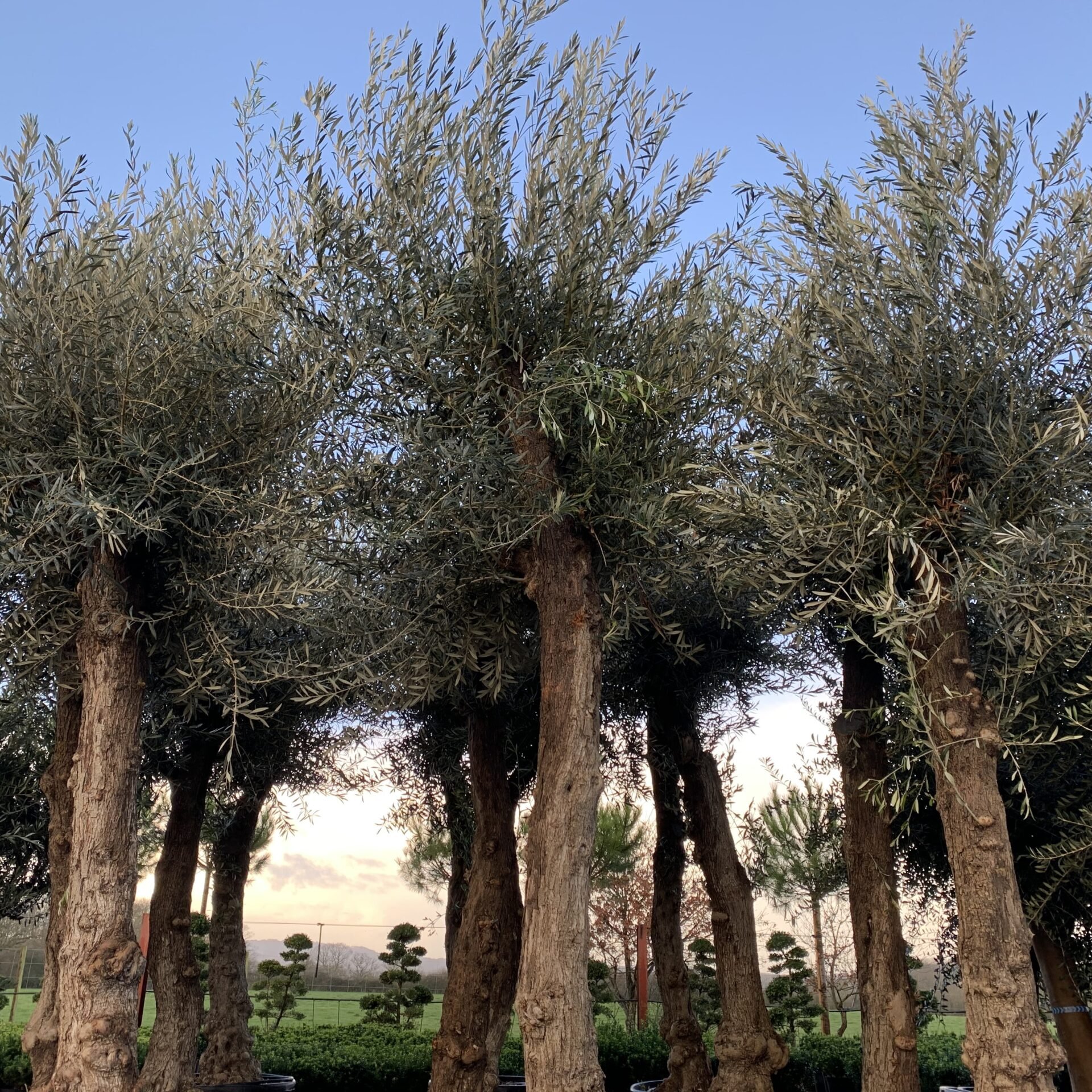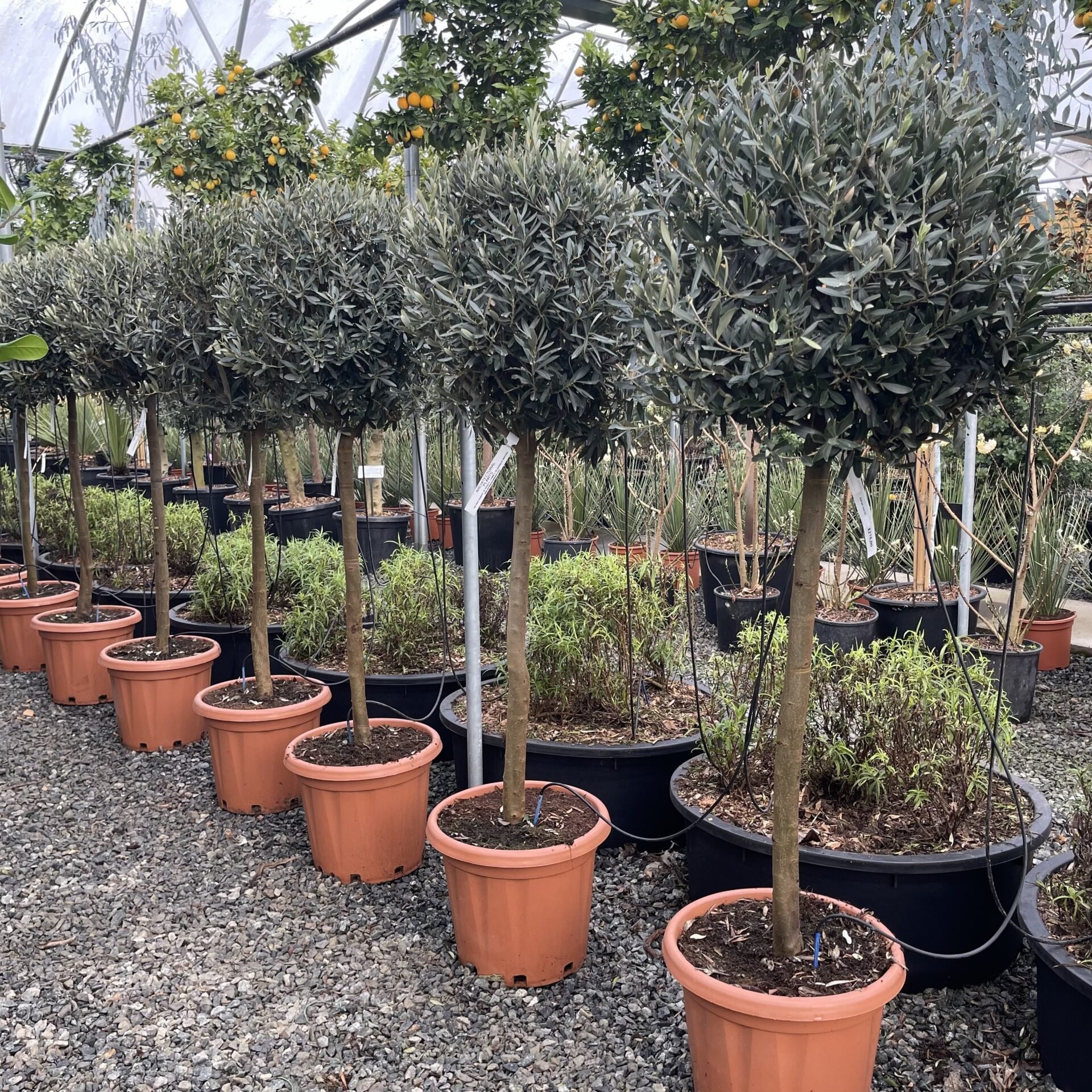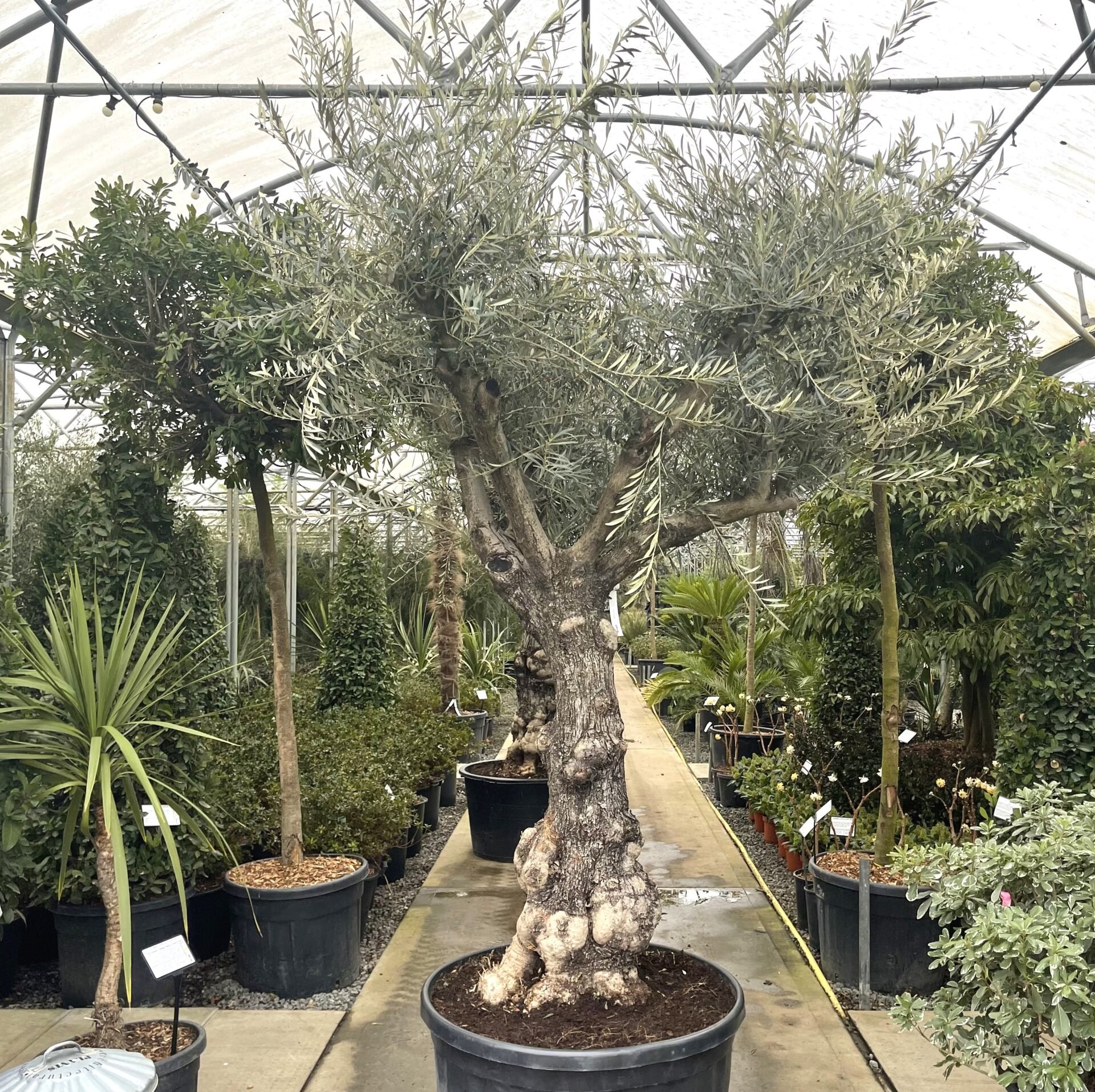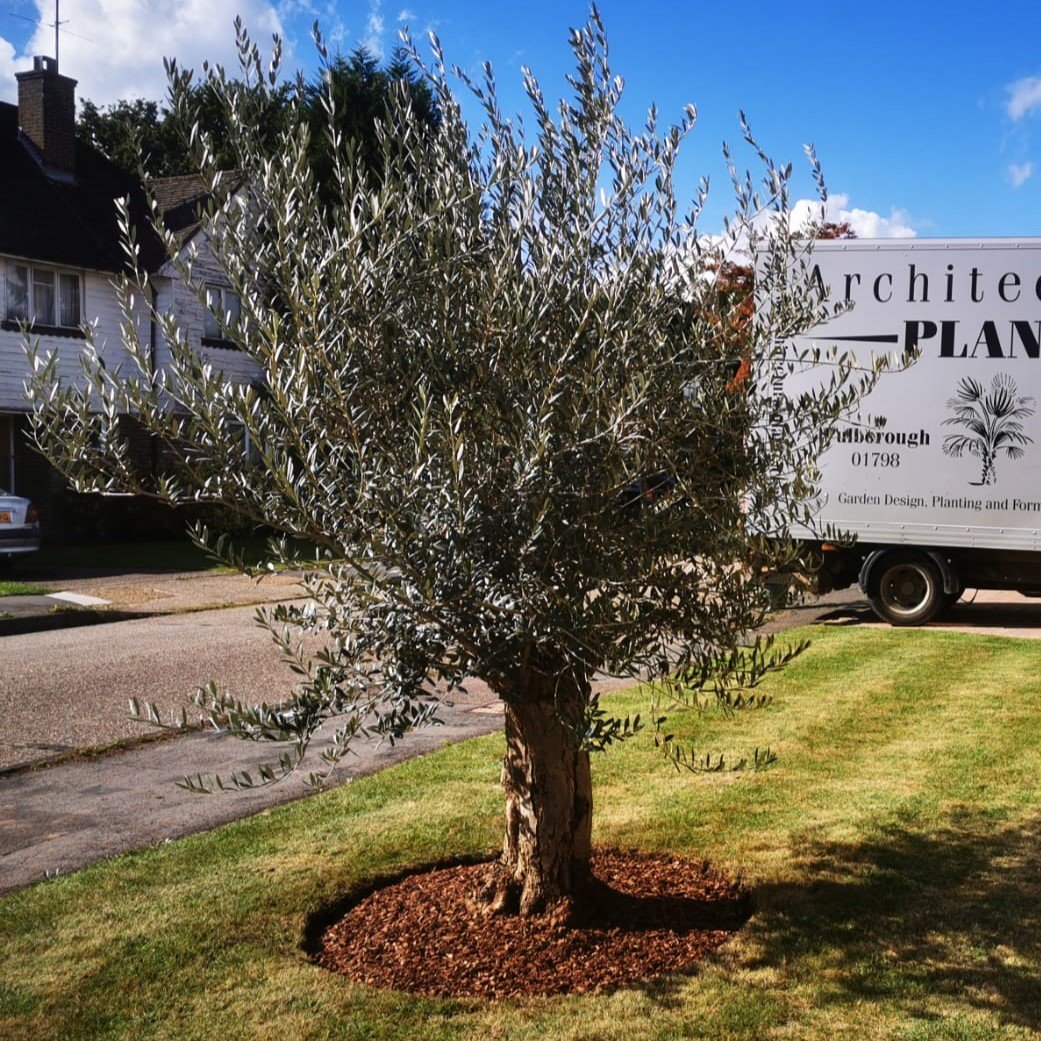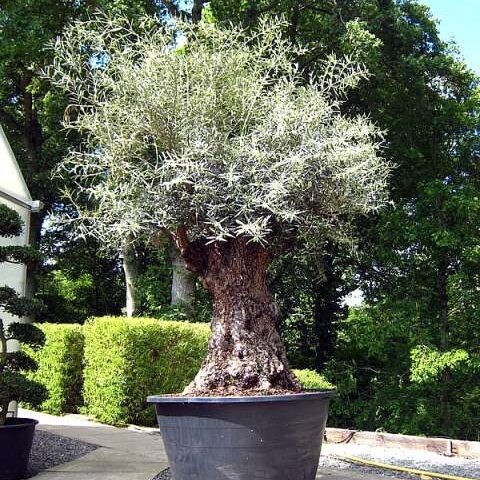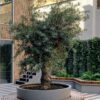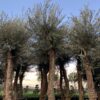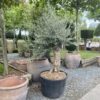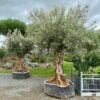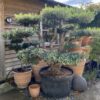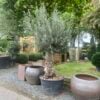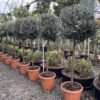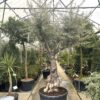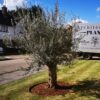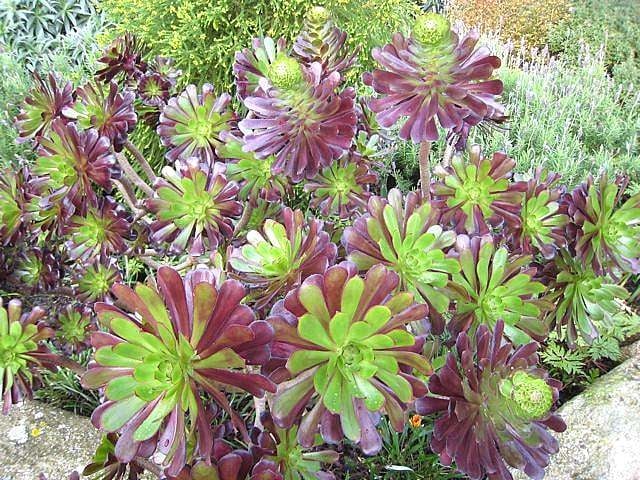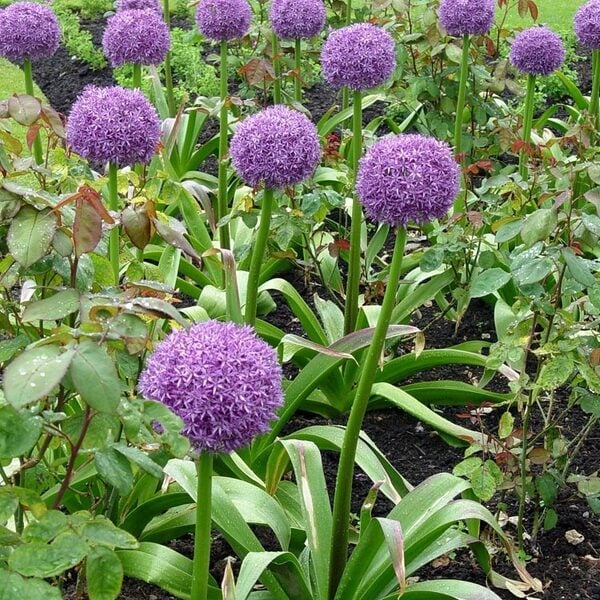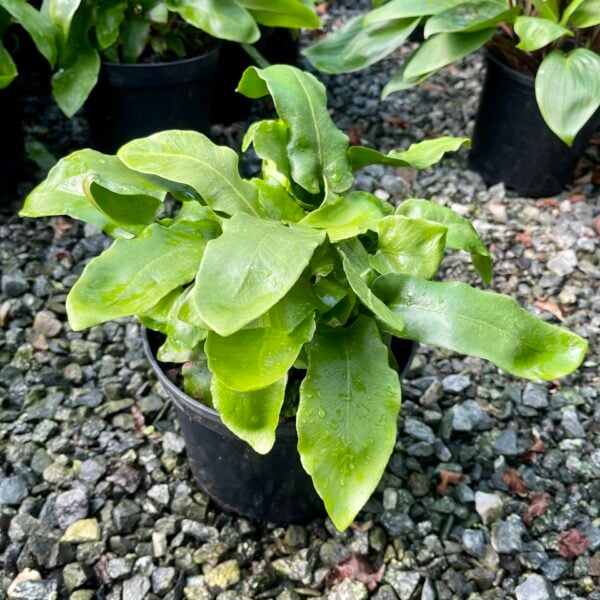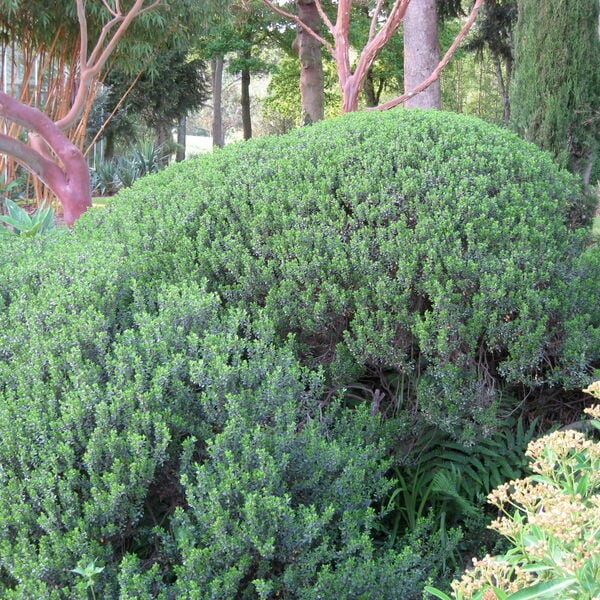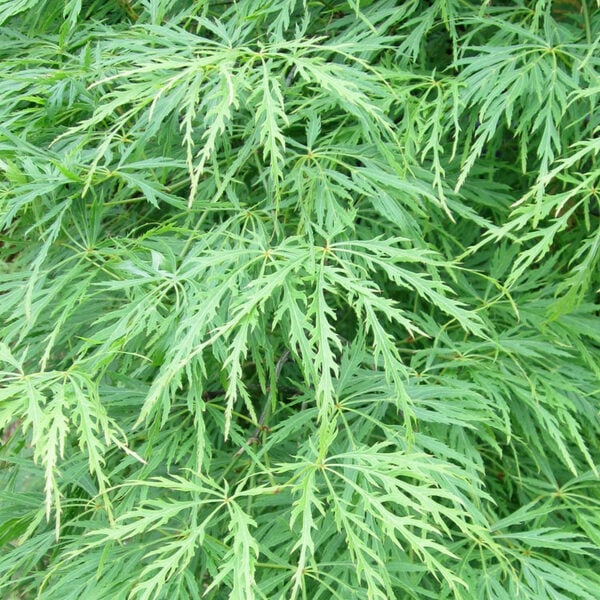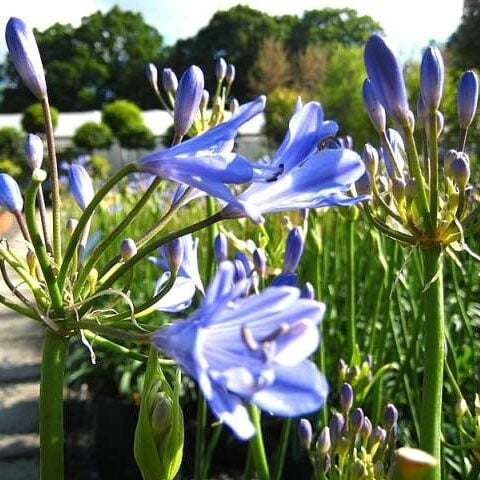Olea europaea (Olive)
Familiar with its grey leaves, gnarly trunk and essence of hotter climes. As with most plants – the bigger, the hardier they are. Try clipping them – beautiful topiary. Please contact us for other stock availability and sizes.

Hardiness level Amber
Olives are invariably grown in Mediterranean climates throughout the world as fruit trees and therefore they always have their branches cut off to keep them low so the fruit can be reached. I once came across a wood of 80ft tall grey trees swaying in the wind in a long abandoned ranch in California. I'm the tree man and everyone looked to me for identification of these things. I was embarrassed at my ignorance until I remembered that I'd been told that the ranch had been abandoned in the 1940s and what were they likely to grow on a ranch in California? Olives. Huge and completely unrecognisable. This tree - I think - has the remarkable distinction of being the only tree in the world that is only recognisable IF it's had most of its branches cut off.
Will it ever produce ripe fruit in this country? It'll certainly produce fruit but do green and unripe olives have a use? I have no idea. This means that in Britain we have the luxury of treating Olives as ornamentals, rather than as fruit trees. An unusual climate that's mild enough to allow Olives to grow (until we get another stinker of a winter??) quite happily but never hot enough for the fruit to ripen. This allows all sorts of possibilities in the Creative Maintenance department; Olives make particularly beautiful topiary. Dense, shapely and very silvery. Try it.
Angus found himself in a bit of a quandary over this tree. He started the nursery in the late 1980s after a series of ferociously cold winters and at that time - as far as he knew - the only well established Olive tree in Britain was (and still is) in the Chelsea Physic Garden; and Chelsea is in the middle of London and therefore has the balmiest climate in the British Isles. Hardly surprising.
Then lots of people (including us) started importing Olive trees from Southern Europe and this all coincided with the fact we hadn't had a cold winter since 1987. So now we were being asked why we put a red label on Olive trees because people tell us they've had an Olive tree in their garden for 15 years. (Red label means 'not frost hardy'). You can see the problem can't you?
People really like Olive trees but we've steadfastly continued to put red labels on them until now. We don't do it very often but in March 2022 we reclassified the Olive to an Amber label (is this a promotion or a demotion we're not sure) the bigger they are, the tougher they are and as long as they're in the ground (where they belong), they'd probably survive a severe winter although they'd lose most of their leaves until new ones appeared in the spring. They might not be very resistant to frost but they're certainly tough. Most trees grown in the ground have their roots prepared over a period of many years to be lifted and moved. Without that preparation, they won't survive but these big Olives are dug straight out of redundant groves with a digger, bunged in an enormous pot and seem to carry on as if nothing had happened. A remarkable tribute to the toughness of this plant.
Olives need masses of light and hate boggy conditions in the winter. We've planted a monster Olive at the new nursery and because it gets a bit boggy, we just removed its container, plonked it on the ground and piled soil up around it. It's very happy. So far.
You could always chuck a duvet over your Olive if it gets very cold or if you grow them in a pot you can drag them into a shed for the winter.
For those wishing to know more, try Olives - The Life and Lore of a Noble Fruit - by Mort Rosenblum (ISBN - 1 899791 36 1). Some friends who grow olives commercially in Andalucia said they've never looked at either olive trees or olive oil the same way after reading this book.
Propagated by cuttings.
N.B. When clipping several plants with the same tool, have a bucket containing a 5% bleach solution and swish your blades around for 30 seconds between plants to sterilise them. This will help avoid the chance of cross contamination of disease.
Additional Information |
|
|---|---|
| Soil Type | |
| Light | |
| Plant Type | |
| Continent of Origin | |
| Specialist Plants | |
| Features | |
| Tree Size | |
| Situation | Coastal, Conservatories, Mild City Gardens, Plants for Pots, Sheltered Garden |
| Hardiness | |





